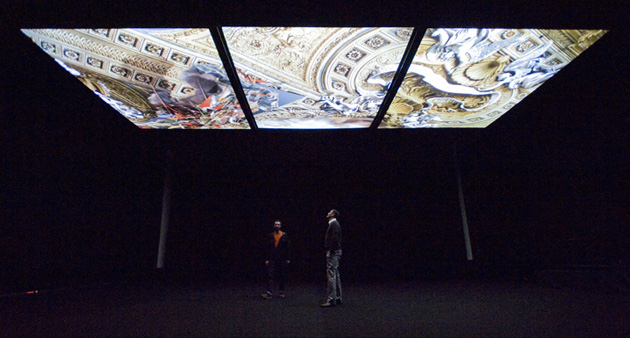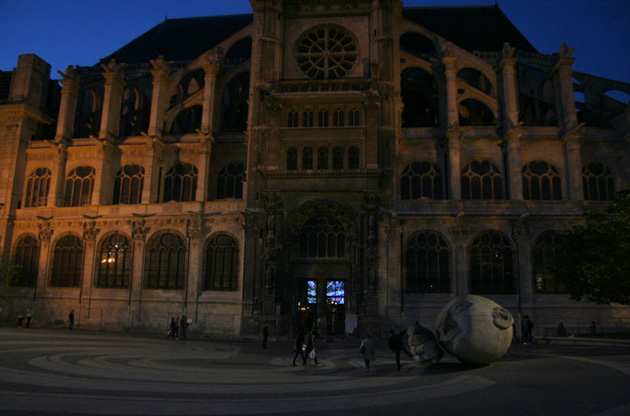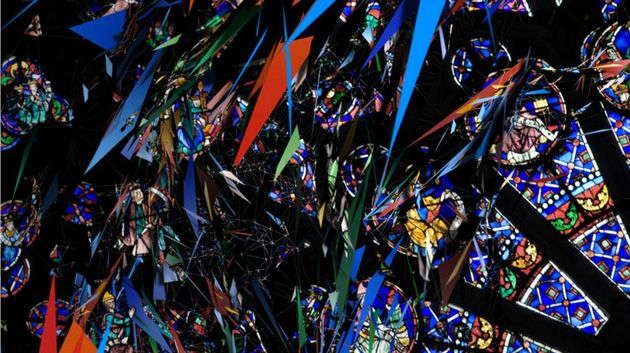Quayola is a London-based artist who is known for using video installations to deconstruct famous artworks. He uses ideas of algorithm and abstraction to reinvent well-known pieces through video. He works closely with DJs and producers (he himself dabbles in electronic music) such as Jamie XX to create visual and audio experiences. In the past his work has been a part of The Creator’s Project in NYC which gives people a chance to see and take part in a convergence of art, music and video in a large space where they can interact with the art and with one another.
During The Creator’s Project NYC in October 2011, Quayola talked about his work and said “In this specific show we experimented with a different set up because you cannot look at them at the same time. And at the same time it’s an immersive experience. You really feel the other transformation behind you”.
At the Bitforms Gallery, two of the installations, Strata #4 and Topologies were side-by-side. There was another which was dislocated from them at the entrance. The space isn’t very large and like many galleries has no interesting features so as not to take away from the artwork on exhibit. The walls and floor are all concrete with dim lighting, as the works themselves are displayed on huge screens that give off plenty of light.
There is a bench to sit and watch as these paintings shift and deconstruct continuously. To add to the minimalist feel, there was some ambient music playing in the background. Copies of the actual paintings which were featured in this Quayola project were hung next to his algorithmic versions of the pieces on another wall.

The experience is pretty quieting as there aren’t many places to stand. The views don’t change much in this small space no matter where you are. It is a single room that is separated by a wall. Perhaps in a different setting, this experience would be more interesting, but in the Bitforms setting, the viewer is barraged with light and movement that leaves you feeling unsure where to look. The other issue is that one has to know when the piece starts and when it completes, because it seems to take longer than a half hour.

The painting that is directly placed upon entering seems to move more quickly and the formation of the painting from its fractured state was a transformation that happened fairly fast. The other factor could be that the music wasn’t conducive to focus. The idea was probably to calm the viewer so that they may take their time in watching the formation take place. However, it almost felt as if it was taking too long and within the confines of the space, there really wasn’t any good place to stay for a long period of time.
Overall this exhibit was interesting in concept, but it’s hard to tell if the full experience can be had in such a small space. The screens themselves are so big that it almost takes away from the experience of feeling the transformation of the artwork. This is definitely something to check out, but may be better in one of the other settings that Quayola is known to display his work in.





